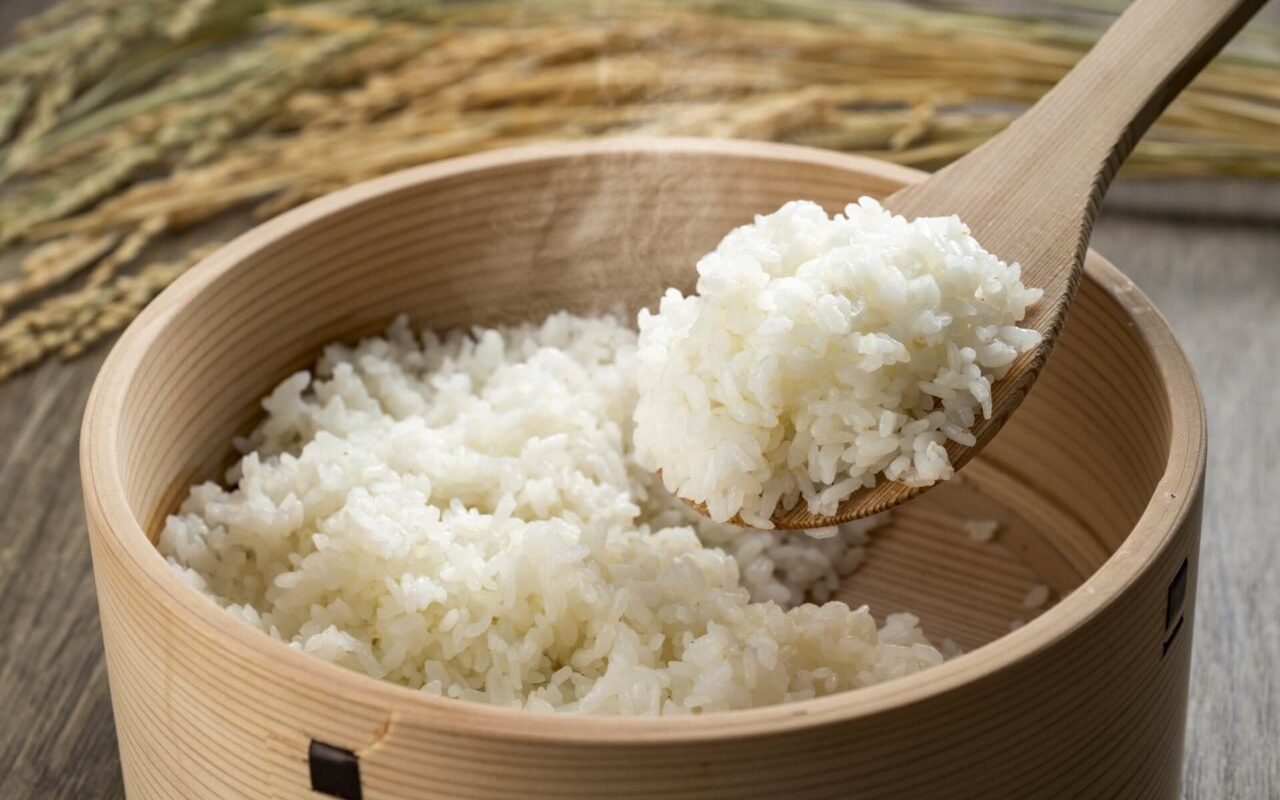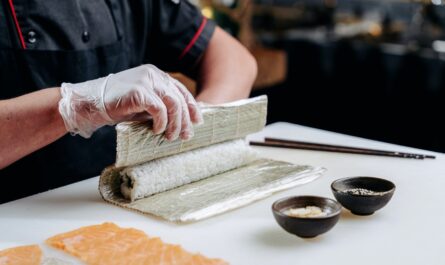Sushi is a beloved dish worldwide, cherished for its unique combination of flavors and textures. For those who prefer plant-based options, vegan sushi rice variations offer a delicious and creative way to enjoy this Japanese cuisine. In this article, we will delve into the diverse world of vegan sushi rice variations, providing insights and inspiration for your next sushi-making adventure.

The Basics of Sushi Rice
Before we explore variations, it’s essential to understand the basics of sushi rice. Traditional sushi rice, or shari, is made using short-grain rice combined with rice vinegar, sugar, and salt. This combination gives sushi rice its distinct flavor and sticky texture, perfect for rolling and shaping.
If you’re new to making sushi rice, consider visiting Flavored Sushi Rice Recipes for guidance on achieving the perfect consistency and taste.
Why Choose Vegan Sushi Rice?
Choosing vegan sushi rice isn’t just about dietary preferences; it’s also an opportunity to explore exciting flavors and ingredients. Vegan sushi rice can be made with various grains, seasonings, and additives, providing a broad spectrum of taste profiles and textures.
Benefits of Vegan Sushi Rice
Switching to vegan sushi rice has several benefits:
- **Healthier Ingredients:** Vegan sushi rice often incorporates whole grains and nutrient-rich ingredients like quinoa, brown rice, and more.
- **Environmental Impact:** Plant-based options generally have a lower carbon footprint compared to animal-based products.
- **Flavor Diversity:** Vegan sushi rice allows for creative combinations, making each sushi roll a unique experience.
Popular Vegan Sushi Rice Variations
1. Quinoa Sushi Rice
Quinoa is a fantastic substitute for traditional sushi rice. It’s high in protein and fiber, making it a nutritious choice. To prepare, cook quinoa as you would rice and season with rice vinegar, sugar, and salt. This variation offers a nutty flavor and slightly crunchy texture.
2. Brown Rice Sushi
For a whole-grain alternative, brown rice is an excellent option. It has a chewier texture than white rice and adds a subtle nutty taste. Ensure to cook it longer for the right softness.
3. Cauliflower Rice Sushi
Cauliflower rice is a low-carb, gluten-free alternative. It’s light and absorbs flavors well. To make cauliflower rice, pulse raw cauliflower florets in a food processor until rice-sized pieces form. Lightly steam and season as usual.
4. Black Rice Sushi
Black rice, also known as forbidden rice, is rich in antioxidants and has a striking appearance. Its earthy flavor adds depth to sushi rolls, making it a visually and gastronomically appealing choice.
5. Coconut Rice Sushi
For a hint of sweetness, coconut rice is delightful. Cook rice with coconut milk for a creamy texture and subtle tropical flavor. This variation pairs well with fruits like mango.
Explore more about coconut sushi rice with this Coconut Sushi Rice Recipe.
Seasoning and Flavoring Options
The choice of seasoning can significantly impact the overall taste of your sushi. Here are some flavoring ideas:
Herbs and Spices
Add herbs like cilantro, mint, or basil for a fresh twist. Spices such as turmeric or smoked paprika can introduce new flavors and vibrant colors.
Vinegars and Oils
Experiment with different vinegars like apple cider or balsamic for unique tangs. Sesame oil or chili oil can add a delightful aroma and taste.
Nuts and Seeds
Incorporate toasted sesame seeds, crushed peanuts, or sunflower seeds for added texture and nutty flavors.
Vegan Sushi Roll Fillings
The fillings in vegan sushi rolls play a vital role in complementing the rice. Here are some popular options:
Vegetables
Common vegetable fillings include cucumber, avocado, bell peppers, and carrots. Roasted sweet potatoes can add a delightful sweetness.
Fruits
Fruits like mango, kiwi, or strawberries can introduce natural sweetness and vibrant colors to your sushi.
Plant-Based Proteins
Tofu, tempeh, or edamame are excellent sources of plant-based protein. Marinate them for extra flavor before using as fillings.
Creating the Perfect Vegan Sushi Roll
Rolling sushi is an art that requires practice. Here are some tips for creating the perfect vegan sushi roll:
Equipment
Invest in a bamboo sushi mat for easy rolling. A sharp knife is essential for clean cuts.
Rolling Technique
Place nori sheet shiny side down on the mat. Spread rice evenly, leaving space at the top. Add fillings and roll tightly, using the mat for guidance.
Presentation
Use a sharp knife to slice rolls into even pieces. Garnish with sesame seeds or sliced green onions for added flair.
Pairing Vegan Sushi with Condiments
Condiments enhance the sushi experience. Consider these options:
Soy Sauce Alternatives
Try tamari or coconut aminos for gluten-free soy sauce alternatives.
Wasabi and Ginger
Traditional accompaniments like wasabi and pickled ginger add spice and tang.
Homemade Dips
Create your own dips using ingredients like tahini, miso, or lime juice for unique flavors.
Storing Vegan Sushi
Proper storage ensures freshness. Refrigerate sushi in an airtight container and consume within 24 hours for optimal taste.

FAQs
Can I use any rice for vegan sushi?
While short-grain rice is traditional, you can use various grains like quinoa or brown rice for vegan sushi.
How do I prevent my sushi rice from becoming mushy?
Ensure proper cooking and avoid over-seasoning to maintain the right texture.
What can I use instead of nori sheets?
Rice paper or lettuce leaves are great alternatives to nori sheets for rolling sushi.
For more insights on sushi rice properties, check out Yellowing Sushi Rice Warning and Short Grain Rice for additional information.
This article contains affiliate links. We may earn a commission at no extra cost to you.



